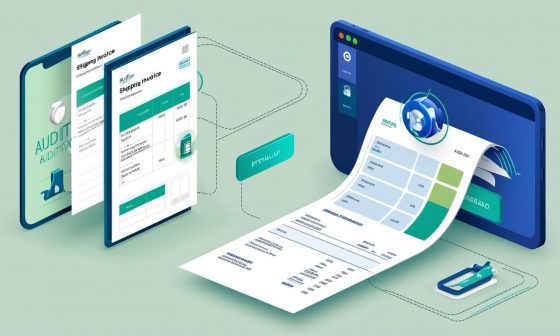As a shipper, optimizing your shipping costs is your topmost priority.
By now you must be aware of the money-back guarantee policy for shipments in the event FedEx, UPS or DHL fail to meet their delivery promises. ( If not you can read all about it here)
Capturing these service failures and claiming refunds is no easy feat.
Manually claiming refunds for delivery exceptions is a huge time sink and drain on your resource productivity. Moreover, a manual audit is neither efficient nor effective.
So you go ahead and enlist the services of an automated parcel audit service.
Refunds start pouring in.
But something is amiss.
You were expecting to redeem a significant portion of your shipping costs in the form of automated refunds.
Instead, you manage to optimize your shipping costs by a paltry 5%-6% (if you are lucky).
This is because you did not consider the accessorial charges that masquerade as shipping costs on your invoice.
Over the years, FedEx and UPS have been consistently escalating the accessorial charges namely additional handling charges, delivery area surcharges, residential surcharges, dim weight pricing. These charges have been slowly peeling away at your shipping expenses. For certain shipping profiles, surcharges now make up to half of their shipping charges.
Let’s take a look at the increase in the accessorial charges announced in 2019 in addition to the 4.9% general rate increase:
| FedEx Surcharge Rates – 2019 | |
| Additional Handling | $13.50 |
| Address Correction | $16 |
| Delivery Area Surcharge | $2.70 – $3.50 |
| Oversize charges | $90 |
| Residential Surcharge | $3.80-$4.40 |
| UPS Accessorial Charges (2019) | |
| Additional Handling | $14 |
| Address Correction | $16.40 |
| Delivery Area Surcharge | $2.80 – $3.40 |
| Residential Surcharge | $3.95- $4.55 |
Now, these accessorial charges along with Dimensional weight pricing make up a whopping 40% of your shipping spend.
In most cases, the sum of accessorial charges exceeds the base shipping rate.
Let’s break down the various surcharges that sneak into your invoice and pose a threat to your bottom line:
Residential Surcharge
A charge is applied whenever a consignment has to be delivered to a residence or a non-commercial area.
FedEx defines residential surcharge as a charge that applies to shipments addressed to a home or private residence, including locations where a business is operated from a home, or to any shipment in which the shipper has designated the delivery address as a residence.
The reason FedEx or UPS levy these charges is simple. With the explosion of e-commerce, there has been a surge in the packages delivered to residences. In order to efficiently handle these orders, special charges are applied.
In the latest GRI, residential charges have been increased to almost 9%. Both ground and express deliveries saw a bump in the residential charges in 2019.
The following table highlights the rate increase in residential surcharge:
| Residential Delivery Charge | 2018 | 2019 |
| FedEx Express | $4.15 | $4.40 |
| FedEx Ground | $4.15 | $4.40 |
| UPS Air | $4.15 | $4.40 |
| UPS ground | $3.60 | $3.95 |
Delivery Area Surcharge
Whenever FedEx or UPS deliver packages to areas that are considered remote or less accessible, a delivery area surcharge is applied. Delivery area surcharges range from $2.60 to up to $4.65. Depending on the shipment destination, the delivery area surcharge is arguably the third-highest surcharge on your invoice.
Here are the most commonly applied delivery area surcharges:
| Delivery Area Surcharge | 2019 |
| Delivery Area Surcharge Commercial FedEx Express | $2.80 |
| Delivery Area Surcharge Commercial FedEx Ground | $2.70 |
| Delivery Area Surcharge Commercial UPS Air | $2.95 |
| Delivery Area Surcharge Commercial UPS Ground | $2.80 |
DIM Weight Pricing
The most complex of the charges on your FedEx and UPS invoices is the Dimensional weight pricing.
While calculating the weight of the package, in addition to their actual weight FedEx and UPS take into consideration their dimensions. Whichever is higher is the billable weight. Now how they arrive at this decision is quite obscure.
Here’s the formula for calculating Dimension Weight of a shipment:
Dimensional Weight = L x W x H / 139
L = Length of the package
W = Weight of the package
H = Height of the package
The divisor which was 166 in 2015 now stands at 139. This means that lighter packages may also be subjected to a higher price if the packaging is improper.
Here is a sample actual weight vs billed weight calculation:
| Actual Weight | Billed weight | Dim Weight Calculation |
| 40.6 | 63 | 29 * 20 * 15 / 139 = 63.00 |
The charges for this package based on the billed weight is $39.50.
By optimizing the size of the package, the shipping cost can be reduced by up to 50%.
Large and Oversized Packages
Another category that has seen a steady rise in charges is large and oversized shipments.
When is a package considered to be large?
UPS defines a “Large Package” when its length (longest side of the package) plus girth [(2 x width) + (2 x height)] combined exceeds 130 inches and is less than 165 inches, or its length exceeds 96 inches.
Due to the complex and opaque nature of the DIM weight pricing calculation, shippers end up paying 10%-20% more than the actual weight.
Oversized package category has been constantly bearing the brunt of all General Rate Increases announced until now. Take for example, during the 2019 peak season charge update, UPS revised the tariff for the oversized packages to a shocking $126 – $146. This hike is a straight-up 20% higher compared to last year’s.
Another charge that has been consistently increasing is the Additional Handling Service charge.
The additional handling charge is a close twin to the oversized package category.
UPS and FedEx define packages that warrant an additional handling charge when:
- Measures greater than 60 inches along its longest side.
- Measures greater than 30 inches along its second-longest side.
- Has an actual weight of greater than 70 pounds.
- Is encased in an outer shipping container
Historically additional handling charges have been increasing by 2%-3% YOY.
Address Correction Charges
The most dubious charge on your FedEx/UPS invoice is the address correction charge. Address correction charges are applied whenever a modification is made to the address specified on the shipping label in order to enable the successful fulfillment of the delivery.
To give you an idea of how subjective these charges are, here is a sample address correction fee applied:
| Original Address | Changed Address |
| 852, New Castle St North Carolina(NC), 27511 | 852, New Castle Street North Carolina(NC), 27511 |
You may not recognize the revision from a single glance. Take a harder look again! An address correction fee of $14 was applied.
Yes, that’s right. Even if the revision entails a minor correction, a hefty fee is applied. Today the fee is $15-$16.
If you think that’s not much, consider the following example:
An apparel retailer failed to update his address book that is synced to shipping label generation software. As a result, every month when a delivery is made to a customer, it has an address correction charge embedded within the invoice. The economics of that would be $15 * 12 = 180 USD. Multiply that by say 10 shipments, it sums up to 1800 USD. The retailer is completely oblivious to these shipping spend leakages.
So the larger question is how can shippers wield their weapons in their fight against inflating accessorial charges:
- A complete shipping profile analysis that helps you zero down on the package dimension, the target destination, and monthly shipping volume
- Quantifying the cost due to surcharges to gauge the trend in your shipping expenditure.
- Data backed negotiation that includes a discounted dim weight calculation, differential tariff based on zones and volume.
- Continuous audit of FedEx/UPS invoices to iteratively track and account for every shipping expenditure.
- SLA compliance to check if the agreed-upon rates are being applied correctly.
Auditing FedEx/UPS/DHL invoices for more than 50 carrier errors is a long drawn process — fraught with manual errors, inefficiencies and a lot of frustration.
At AuditShipment we perform in-depth auditing of your invoice and offer 360-degree visibility into your shipping expenses.
Our auditing process is 2 fold:
At a service level, we capture and claim refunds for service failures.
At an invoice level, our algorithms scrutinize your invoice for every overcharge and billing mistakes.
AuditShipment does the heavy lifting of systematically checking your FedEx/UPS/DHL invoices letting you focus on scaling your business. Our algorithms have been built to carefully dissect every charge against the threshold in-built rules so as to help you optimize your shipping spend.
Does your existing invoice-audit process capture incorrect surcharges along with delivery errors?






